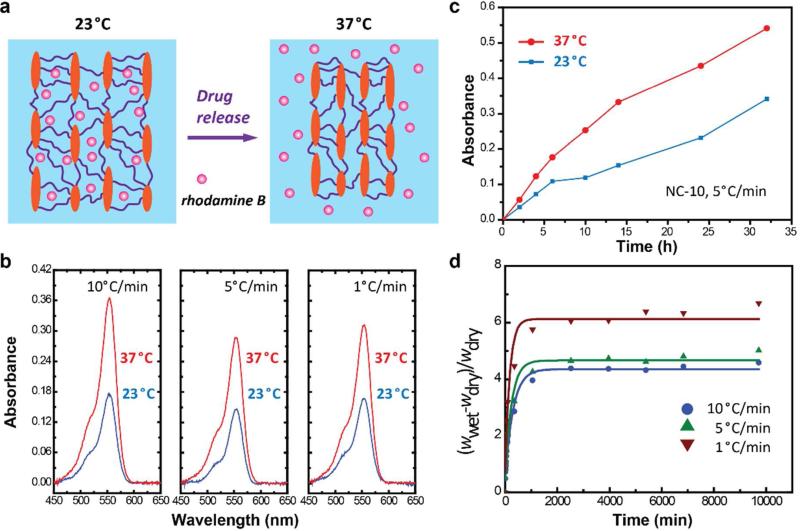Figure 4.
Thermoresponsive drug release and swelling properties of bio-inspired nanocomposite hydrogels. a) Drug release of the hydrogel is largely enhanced by increasing temperature from 23°C to 37°C, because of the coil-to-globule transition of PNIPAAm around its LCST (32°C). b) Visible absorption spectra showing the thermoresponsive release of rhodamine B from hydrogels fabricated by freeze-casting at 10, 5, and 1°C/min. For comparison, hydrogels loaded with rhodamine B were immersed in PBS at 23°C or 37°C for 24 hours. c) Absorption of PBS solution at a wavelength of 550 nm was showing to indicate the release profiles of NC-10 hydrogel (obtained by freeze-casting at 5°C/min) at different releasing temperatures. d) The hydrogels with different pores reach their equilib rium swelling state in PBS in about 20 hours. Hydrogels fabricated by freeze-casting at 1°C/min have a higher final degree of swelling (wwet -wdry)/wdry, compared with those at 5 and 10°C/min, which is consistent with their pore size as shown in Figure 2.

